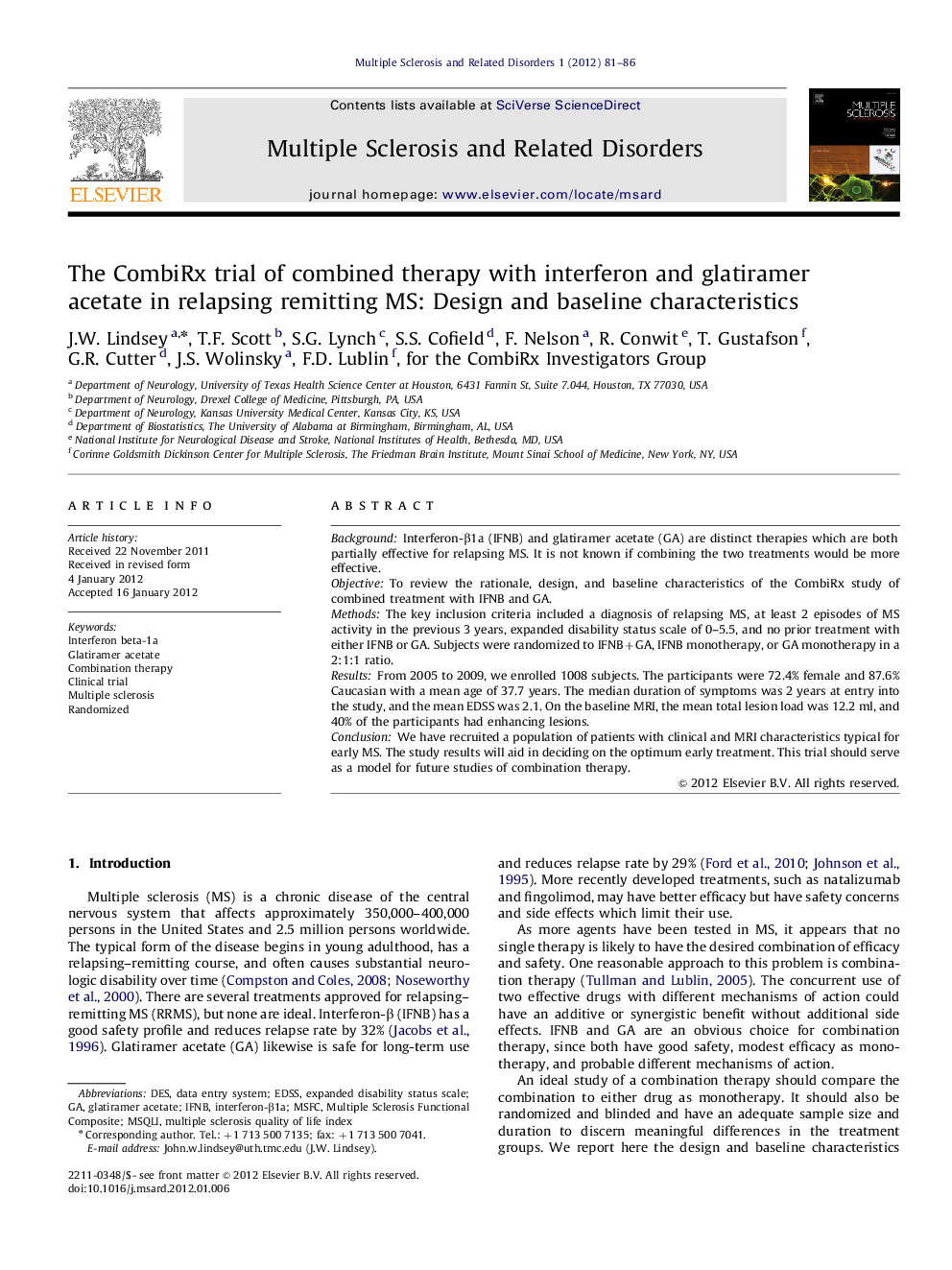| Article ID | Journal | Published Year | Pages | File Type |
|---|---|---|---|---|
| 2823887 | Multiple Sclerosis and Related Disorders | 2012 | 6 Pages |
BackgroundInterferon-β1a (IFNB) and glatiramer acetate (GA) are distinct therapies which are both partially effective for relapsing MS. It is not known if combining the two treatments would be more effective.ObjectiveTo review the rationale, design, and baseline characteristics of the CombiRx study of combined treatment with IFNB and GA.MethodsThe key inclusion criteria included a diagnosis of relapsing MS, at least 2 episodes of MS activity in the previous 3 years, expanded disability status scale of 0–5.5, and no prior treatment with either IFNB or GA. Subjects were randomized to IFNB+GA, IFNB monotherapy, or GA monotherapy in a 2:1:1 ratio.ResultsFrom 2005 to 2009, we enrolled 1008 subjects. The participants were 72.4% female and 87.6% Caucasian with a mean age of 37.7 years. The median duration of symptoms was 2 years at entry into the study, and the mean EDSS was 2.1. On the baseline MRI, the mean total lesion load was 12.2 ml, and 40% of the participants had enhancing lesions.ConclusionWe have recruited a population of patients with clinical and MRI characteristics typical for early MS. The study results will aid in deciding on the optimum early treatment. This trial should serve as a model for future studies of combination therapy.
► Available therapies for MS are only partially effective. ► Combining therapies might be more effective. ► We compared the combination of interferon and glatiramer to either agent alone. ► We present the baseline characteristics of our study population.
